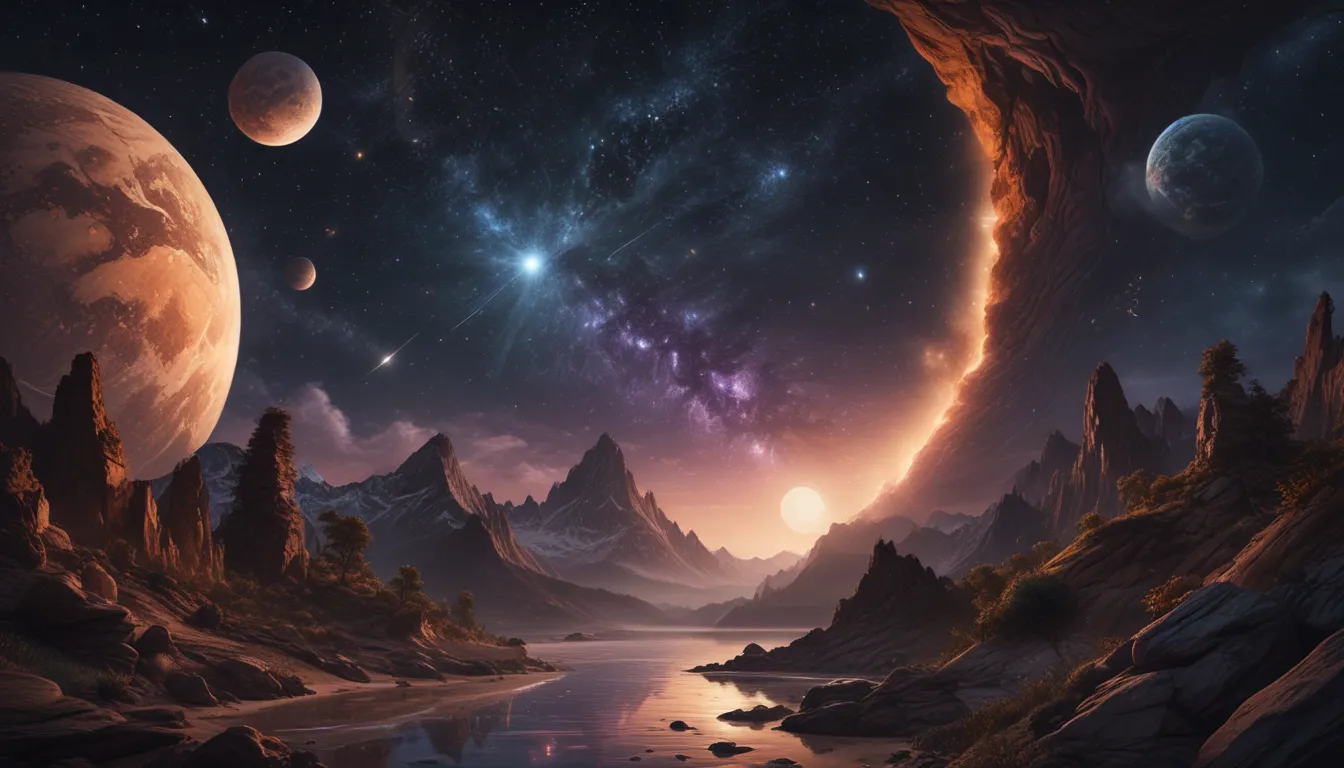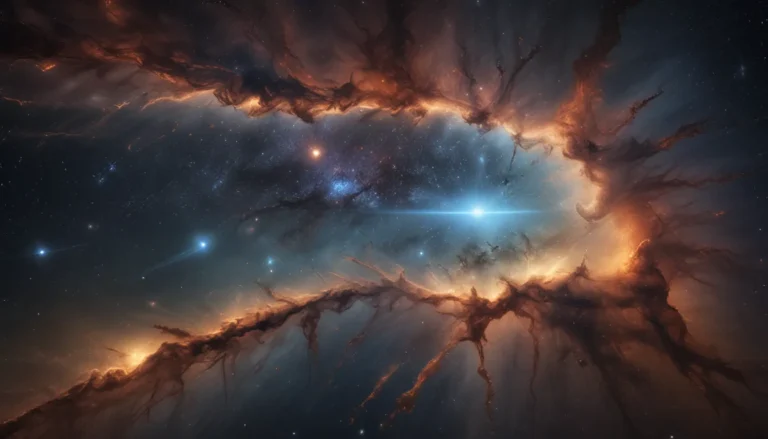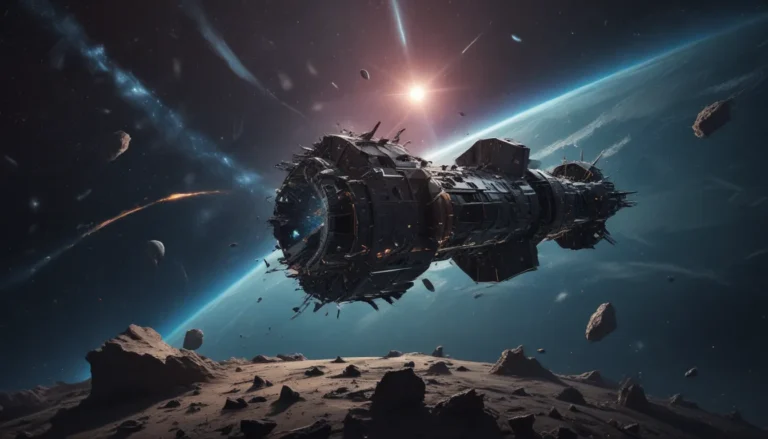The pictures we use in our articles might not show exactly what the words say. We choose these pictures to make you interested in reading more. The pictures work together with the words but don’t take their place. The words still tell you the important facts.
The universe, with its vast expanse and infinite wonders, never fails to captivate us. Among the countless marvels it holds, stars stand out as celestial entities that play a vital role in shaping our understanding of the cosmos. These luminous giants go through a mesmerizing transformation known as stellar evolution, a journey filled with cosmic forces and intricate processes that leave us in awe.
In this article, we will take a deep dive into the captivating realm of stellar evolution and unearth eight mind-blowing facts that will expand your knowledge and appreciation of the universe. From the birth of stars in colossal clouds to their explosive demise as supernovae, the story of a star is a remarkable tale of birth, transformation, and legacy.
Join us on a cosmic adventure as we unravel the incredible phenomena that unfold throughout a star's lifetime, shedding light on the complex mechanisms that govern the evolution of these celestial beings. Get ready to embark on a journey that will not only broaden your understanding of the universe but also leave you marveling at the wonders of stellar evolution.
Understanding Stellar Evolution: A Cosmic Cycle of Birth and Transformation
- Stars are born in massive clouds and go through different stages, shaping the universe and creating elements crucial for planets and life.
- Stellar evolution is a cosmic cycle of birth, transformation, and legacy.
- Stellar nurseries are powerful engines that generate immense energy.
- Stellar collisions and mass influence the dramatic transformations of stars.
- From the birth of stars to the creation of black holes, stellar evolution is a mind-blowing cosmic spectacle.
Stars’ Birth in Giant Molecular Clouds
One of the most astonishing facts about stellar evolution is that stars are born within colossal clouds of gas and dust known as giant molecular clouds. These clouds, spanning hundreds of light-years in diameter, undergo gravitational collapse, leading to the formation of new stars.
The Power of Stellar Nurseries
Stellar nurseries, the birthplaces of stars, are dynamic and energetic environments where gravity triggers intense processes, including nuclear fusion. These cosmic engines generate vast amounts of energy that shape the surrounding interstellar medium.
The Evolutionary Stages of Stars
Similar to living organisms, stars go through various evolutionary stages. Starting as protostars, they convert gravitational potential energy into thermal energy, progressing to the main sequence phase where they spend most of their lives. Ultimately, stars exhaust their nuclear fuel, undergoing dramatic transformations into red giants, supergiants, or exploding as supernovae.
Exotic Objects Formed from Stellar Remnants
When massive stars reach the end of their lives and undergo supernova explosions, they give rise to fascinating objects in the universe. Neutron stars, composed almost entirely of neutrons, and black holes, regions of spacetime with immense gravitational pull, are among the extraordinary outcomes.
The Occurrence of Stellar Collisions
In dense stellar environments like globular clusters, close encounters and collisions between stars are not uncommon. These collisions can lead to the formation of exotic binary star systems or powerful explosions known as nova or supernova outbursts. The intricate dynamics within these clusters involve stars interacting and exchanging mass throughout their lifetimes.
The Influence of Mass on Stellar Evolution
The mass of a star significantly impacts its evolution. High-mass stars burn fuel at a faster rate with shorter lifetimes compared to low-mass stars. Massive stars undergo more extreme transformations, often culminating in spectacular supernova explosions, while low-mass stars undergo a slow and steady evolution, burning fuel for billions or even trillions of years.
Synthesis of Elements in Stellar Interiors
Stellar evolution not only gives rise to different types of stars but also synthesizes elements within stars' cores. Nuclear fusion reactions in the intense heat and pressure result in the creation of metals and elements crucial for planet formation, including Earth.
Shaping the Universe through Stellar Evolution
The continuous cycle of stellar birth and death profoundly impacts the universe's structure and evolution. Stellar explosions like supernovae disperse heavy elements into space, serving as building blocks for future stars, planetary systems, and potentially, life itself. Stellar evolution is a driving force in shaping the vast cosmic tapestry we observe today.
Conclusion: Embracing the Marvels of Stellar Evolution
In conclusion, stellar evolution is a captivating and intricate process that shapes the life cycles of stars. From their birth in massive clouds to their demise as various stellar remnants, stars exhibit incredible transformations driven by nuclear fusion, gravity, and other physical forces. By understanding stellar evolution, we gain valuable insights into the universe's origins and the elements that form the basis of everything around us. It's truly awe-inspiring to contemplate that the elements in our bodies were once forged within distant stars.
FAQs
-
What is stellar evolution?
Stellar evolution is the process through which a star undergoes various changes and transformations throughout its lifetime, from its birth to its death. -
How do stars form?
Stars form from massive clouds of gas and dust called nebulae, which collapse under their gravity to ignite nuclear fusion and initiate star formation. -
What fuels a star?
Stars are fueled by nuclear fusion, where hydrogen atoms combine to form helium, releasing a tremendous amount of energy that maintains the star's temperature and luminosity. -
Do all stars evolve in the same way?
No, the evolution of stars depends on their initial mass; low-mass stars like the Sun undergo different stages compared to high-mass stars, which experience more dramatic transformations. -
What happens when a star dies?
The fate of a dying star depends on its mass; low to medium-mass stars may become white dwarfs, while high-mass stars can form neutron stars or collapse into black holes. -
How long does stellar evolution take?
The duration of stellar evolution varies based on the star's initial mass; low-mass stars can live for billions of years, while high-mass stars have significantly shorter lifetimes. -
Can we observe stellar evolution?
Yes, scientists and astronomers observe stellar evolution by analyzing the light emissions, temperature, and spectral characteristics of stars using telescopes and advanced instruments. -
How does stellar evolution relate to the formation of elements?
Stellar evolution is crucial for synthesizing heavy elements through nuclear fusion processes within stars' cores. These elements are scattered into space during stars' lifecycle, becoming part of new celestial bodies.
Unravel more secrets of stellar evolution and expand your cosmic understanding with our articles on Cepheid variable stars, star cluster dynamics, and white dwarfs. Each topic offers profound insights into the universe's celestial wonders, promising an enlightening adventure through the vast expanse of space. Prepare to be amazed as you discover more stellar secrets and enhance your appreciation for the awe-inspiring cosmos.
Our dedication to delivering trustworthy and engaging content drives us to provide you with valuable insights and information contributed by real users like you. Every fact on our site undergoes meticulous review by our dedicated editors to ensure accuracy and reliability. Trust in our commitment to quality and authenticity as you explore and learn with us.






